This Habanero Tamarind Glaze Recipe is the perfect balance of fiery heat, tangy tamarind, and sweet caramelized goodness, making it a bold and versatile addition to a main dish of grilled meats, roasted veggies, and even your favorite rice bowls.
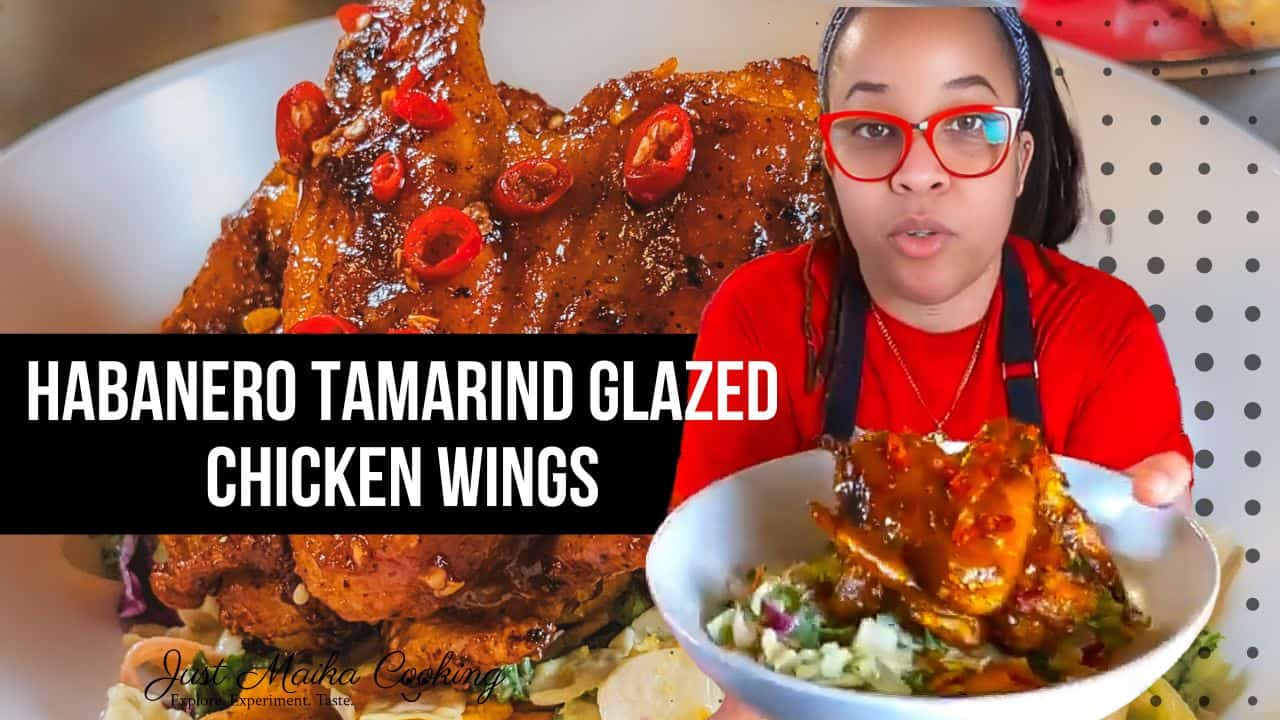
Table of Contents
Jump to:
- Sweet, Spicy and Tangy Sauce
- What is Tamarind Used For?
- How Does Tamarind Taste, and What Forms Does it Come In?
- The Fiery Habanero Pepper: A History and Heat Profile
- Habanero vs. Scotch Bonnet: The Caribbean Pepper Showdown
- Ingredients with Steps
- Culinary Glossary
- Techniques
- Substitutions
- Variations
- Equipment
- Storage and Reheating
- Cooking Tips
- Frequently Asked Questions
- Sauce Recipes
- Caribbean Recipes
- 📖 Recipe
- Subscribe to the YouTube Channel
- Have a Comment or Question?
Sweet, Spicy and Tangy Sauce
Have you ever wondered how to create glazes and sauces without relying on the same old BBQ or store-bought teriyaki routine? Enter this Habanero Tamarind Glaze Recipe—your new secret weapon in the kitchen.
It’s the perfect mix of sweet and spicy tamarind sauce, packing a fiery kick from habaneros while keeping things balanced with honey, brown sugar, and that unmistakable tang of tamarind. Use it to brush it onto chicken fresh off the grill, drizzle it over roasted vegetables, or use it as a dipping sauce for crispy tofu.
And this glaze is here to wake those taste buds. So, if you're ready to impress your dinner guests—or just yourself—grab a saucepan, and let’s get cooking!
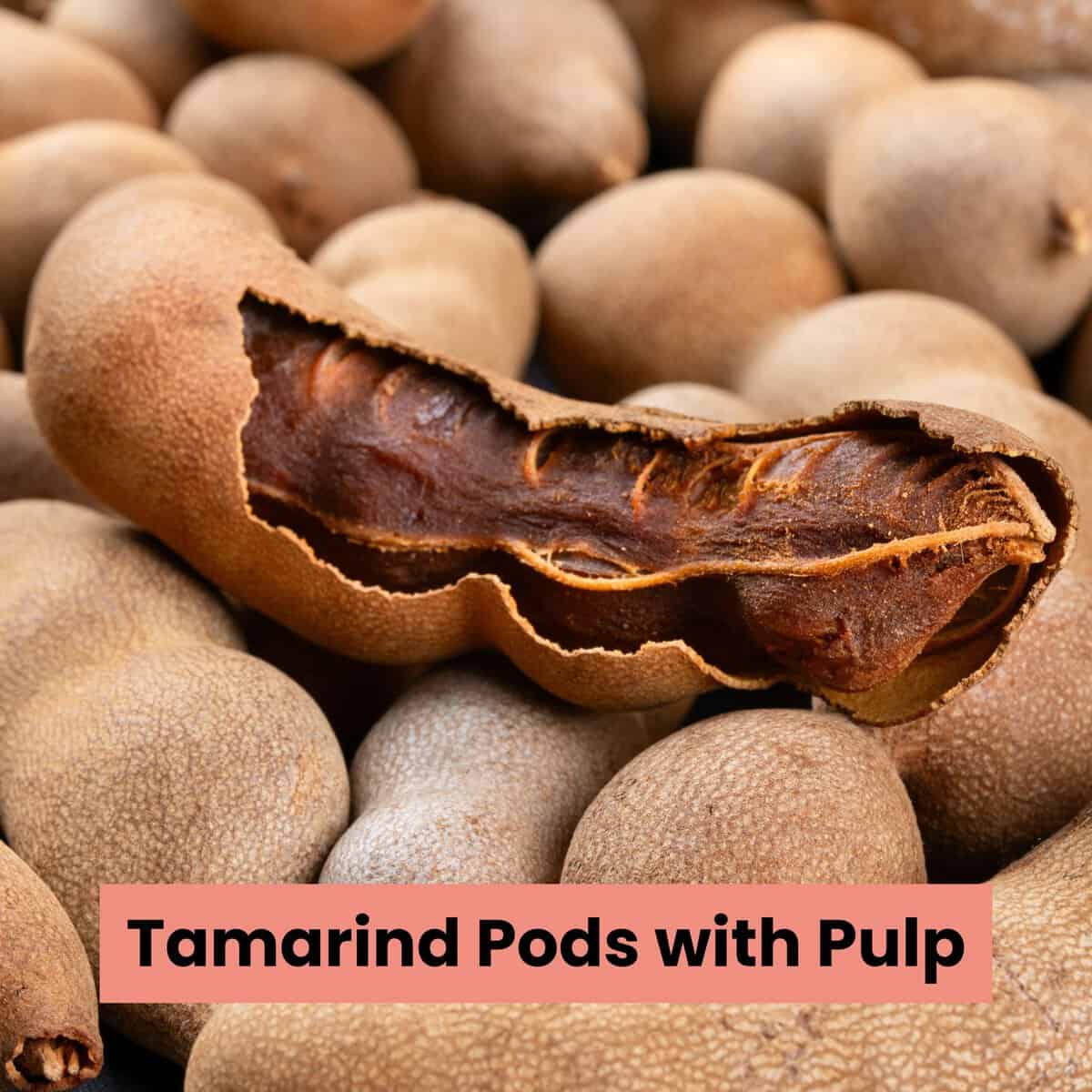
What is Tamarind Used For?
Tamarind is a jack-of-all-trades in the kitchen, adding a sour-sweet depth to everything it touches. Here are just a few ways it’s used:
- Sauces and Glazes – Like this habanero tamarind glaze recipe, tamarind adds a rich, tangy balance to spicy and sweet elements.
- Marinades – Its acidity helps tenderize meats, making it a go-to ingredient in Caribbean jerk marinades and Indian tandoori dishes.
- Beverages – From agua de tamarindo in Mexico to tamarind juice in the Caribbean, this fruit makes an amazing sweet-and-sour drink.
- Chutneys and Condiments – Indian tamarind chutneys bring life to street food like samosas, while Thai tamarind pastes are a must in pad Thai.
- Desserts and Candy – In many Latin American and Asian countries, tamarind is turned into sweet and sour candies that pack a flavorful punch.

Learn how to make Homemade Tamarind Paste.
How Does Tamarind Taste, and What Forms Does it Come In?
Tamarind is a flavor bomb—it’s tangy, citrusy, slightly sweet, and deeply complex. Some people describe it as having a mix of lemon, molasses, and caramel all in one. Because of its versatility, it comes in a few different forms. Fresh tamarind pods are available in markets where you can break them open and scoop out the sticky pulp.
Tamarind paste is the most convenient and what we’re using in this recipe—it’s concentrated and already processed. Then there’s tamarind concentrate, which is even stronger and more acidic.
Some brands also sell tamarind powder, but for a glaze like this, the paste or fresh tamarind pulp is your best bet. Learn more about about tamarind paste here.
The Fiery Habanero Pepper: A History and Heat Profile
Now, let’s talk about the fire in this glaze—the habanero pepper. Originally from the Amazon region, habaneros made their way to Mexico’s Yucatán Peninsula, where they became a staple in local cuisine.
Today, Mexico grows the majority of the world’s habanero chiles, but they’re also widely used in Caribbean, Central American, and even African cooking. These little peppers may look small, but they pack some serious heat, ranking between 100,000 and 350,000 Scoville Heat Units (SHU) on the Scoville scale.
That means they’re up to 140 times hotter than a jalapeño—so handle them with care! They bring more than just heat, though; habaneros have a distinct fruity, citrusy flavor, making them an excellent match for the tanginess of tamarind in this spicy tamarind sauce.

Get your pepper knowledge on!! Learn more about the Scoville Scale, which measures the spiciness of chili peppers based on capsaicin concentration and Handling Chili Peppers.
Habanero
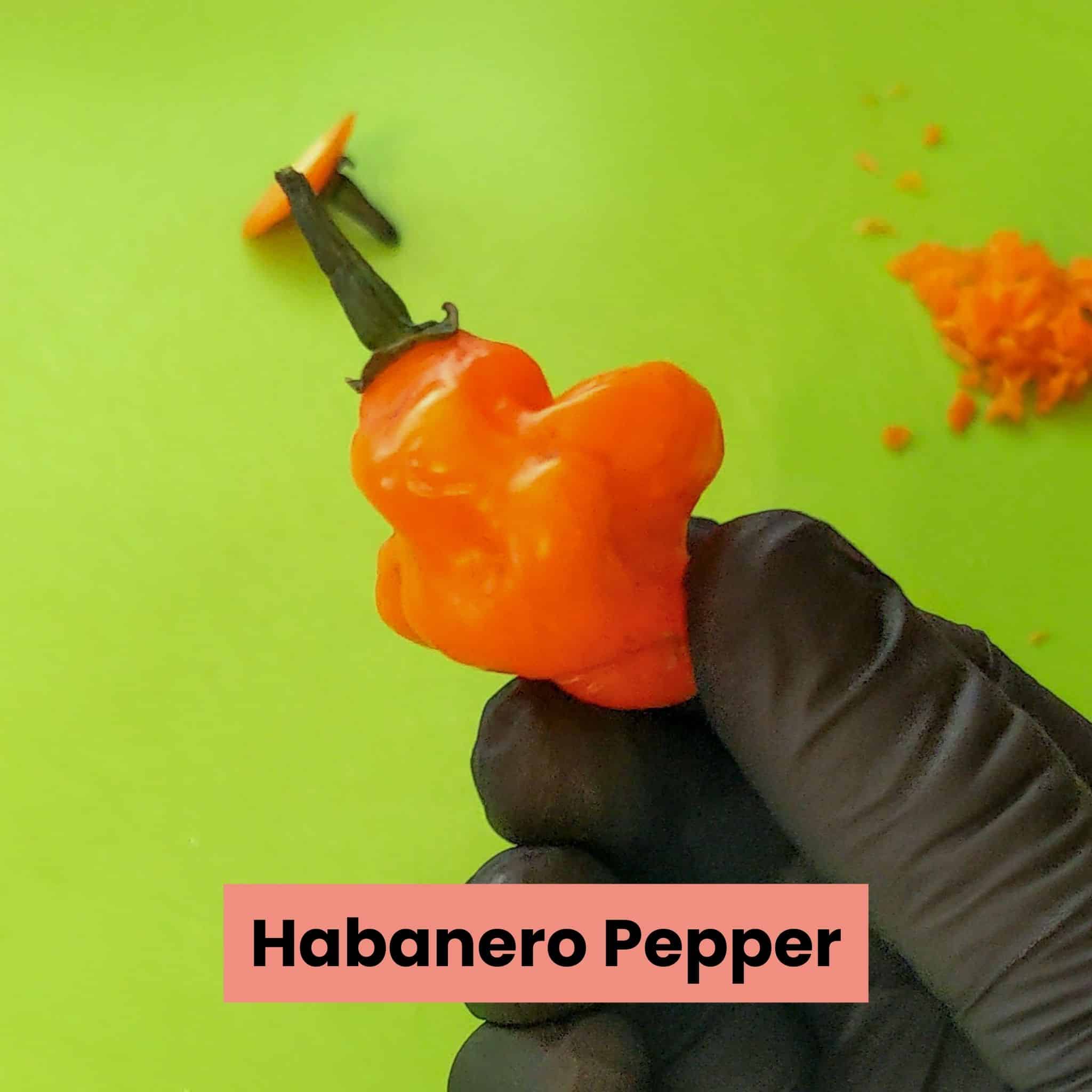
VS

Scotch Bonnet
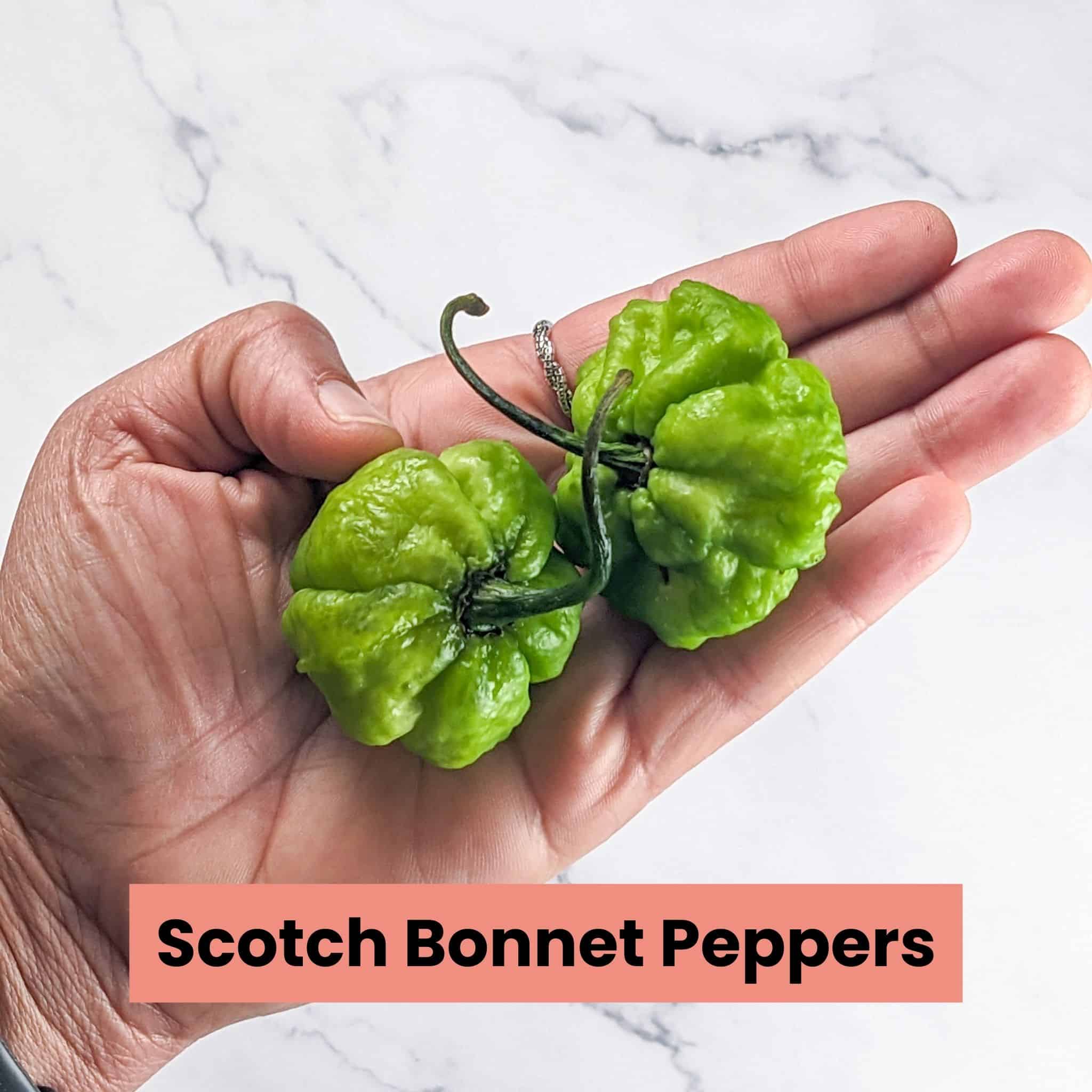
Habanero vs. Scotch Bonnet: The Caribbean Pepper Showdown
If you’ve ever dabbled in Caribbean cooking, you might be wondering—how does habanero compare to its close cousin, the scotch bonnet pepper? Both pack a serious punch, with scotch bonnets ranging from 100,000 to 350,000 SHU—essentially the same heat level as habaneros.
Color and Shape
However, there are some key differences. Color-wise, habaneros tend to be orange or red, while scotch bonnets are bright yellow or orange. Shape-wise, habaneros have a more pointed, lantern-like form, whereas scotch bonnets are rounder and flatter, resembling a tiny bonnet (hence the name).
Flavor and Region
When it comes to flavor, scotch bonnets are sweeter and fruitier, while habaneros lean slightly more citrusy and floral. Both peppers grow in hot, tropical climates, thriving in Caribbean, Central American, and West African cuisines.
While habaneros shine in Mexican salsas and Caribbean glazes like this habanero glaze for meat, scotch bonnets are the go-to pepper for jerk seasoning, pepper sauces, and classic Caribbean stews.
More Recipes and Cooking Tips
- Benefits, Uses, and How to Make Homemade Tamarind Paste
- Habanero Tamarind Glazed Chicken Wings – Tangy, Sweet and Spicy!
- Grilled Pork Chops with Tamarind Habanero Glaze and Coleslaw
- Frozen Watermelon Lemonade
- Hot Honey Baked Chicken Breast and Glazed Vegetables
Ingredients with Steps
To make this Habanero Tamarind Glaze, start by finely mincing the habanero and garlic, then grating the ginger. In a small saucepan over medium heat, combine tamarind paste, honey, brown sugar, adobo seasoning, soy sauce, apple cider vinegar, ginger, garlic, and habanero, stirring well.
Bring the mixture to a gentle simmer, letting it cook for 3–5 minutes until the sugar dissolves and the flavors meld. If the glaze is too thick, add water or chicken broth gradually until it reaches your desired consistency. Once done, remove it from heat, let it cool slightly, and store it in an airtight container in the fridge for up to a week.
Culinary Glossary
This section provides concise definitions of key ingredients and techniques to enhance understanding and improve cooking skills related to this recipe.
Ingredients
- Adobo Seasoning - A Latin American and Caribbean spice blend typically made with garlic powder, onion powder, oregano, turmeric, black pepper, and salt. It adds depth and savory umami flavor to dishes.
- Apple Cider Vinegar (ACV) - A fermented vinegar made from apple juice. It has a sharp tangy taste with mild fruity notes, often used in marinades, dressings, and sauces to add acidity and balance flavors.
- Habanero Pepper - A small but powerful chili pepper known for its intense heat and fruity, citrusy undertones. It measures between 100,000 and 350,000 Scoville Heat Units (SHU), making it significantly hotter than a jalapeño.
- Soy Sauce - A fermented sauce made from soybeans, wheat, salt, and water. It adds a deep umami flavor and a touch of saltiness, balancing the sweetness and heat in this glaze.
- Tamarind Paste - A thick, dark brown concentrate made from tamarind fruit pulp. It is tangy, slightly sweet, and citrusy, commonly used in Caribbean, Indian, Thai, and Latin American cuisines to add a deep, sour-sweet flavor.
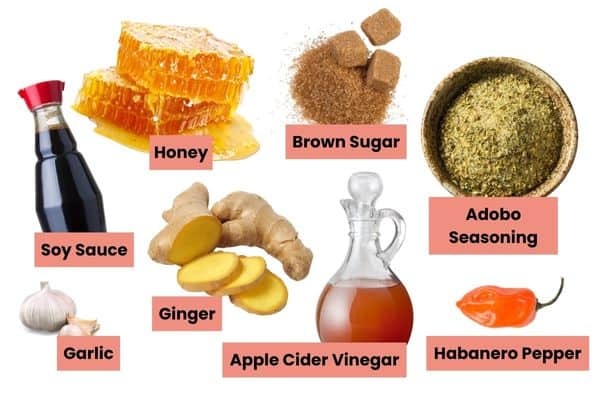
Techniques
- Caramelization - The process of heating sugars until they brown, creating a rich, complex sweetness. In this recipe, brown sugar and honey contribute to the glaze's deep, caramel-like flavor.
- Glaze - A thick, glossy sauce brushed onto food, usually during the final stages of cooking. A glaze adds flavor, shine, and sometimes a slight sticky texture to meats, vegetables, and seafood.
- Maillard Reaction - A chemical reaction between amino acids and reducing sugars that occurs during cooking, creating complex, savory flavors. This reaction contributes to the rich, deep taste of the tamarind glaze when it’s heated.
- Marinade - A seasoned liquid mixture used to soak meats, seafood, or vegetables before cooking to enhance flavor and tenderness. Though this recipe creates a glaze, it can also double as a marinade when thinned with additional liquid.
- Sweet and Spicy Sauce - A category of sauces that combine heat (from chili peppers) and sweetness (from sugar, honey, or fruit) to create a well-balanced flavor profile, as seen in this habanero tamarind glaze.
- Thickening Agent - An ingredient used to give a sauce or glaze a richer consistency. In this recipe, honey, brown sugar, and tamarind paste naturally thicken the glaze as it cooks.
See the recipe card for quantities below.
Substitutions
Dairy-Free
- Yay! This delicious glaze is already dairy-free.
Gluten-Free
- Soy Sauce Substitute - Use tamari or coconut aminos to keep it gluten-free without sacrificing umami.
- Brown Sugar Substitute - Some brown sugars may have gluten cross-contamination. Opt for organic brown sugar or use pure maple syrup.
Vegetarian
- Bonus! This tamarind habanero glaze recipe is also vegetarian.
Convenience
- Tamarind Paste - Lemon or Lime Juice + Brown Sugar (Use 1 tablespoon lemon/lime juice + 1 teaspoon brown sugar per 1 tablespoon tamarind paste.)
- Habanero Pepper - Cayenne Pepper or Red Pepper Flakes (Use ¼ teaspoon cayenne or ½ teaspoon red pepper flakes for mild heat.)
- Honey - Maple Syrup or Agave Nectar (Use equal amounts for a similar sweetness.)
- Brown Sugar - White Sugar + Molasses (Use 1 cup white sugar + 1 tablespoon molasses for every cup of brown sugar.)
- Apple Cider Vinegar - White Vinegar or Lemon Juice (Use equal amounts for acidity.)
- Soy Sauce - Worcestershire Sauce + Salt (Use 1 tablespoon Worcestershire + a pinch of salt for every 1 tablespoon soy sauce.)
Change Heat Level - Modify the recipe's heat level to your liking and learn more about the Scoville Scale and Chili Pairings.
Variations
- Habanero Tamarind Aioli Sauce - To turn this Habanero Tamarind Glaze into a flavorful aioli, whisk 2 tablespoons of the glaze into ½ cup of mayonnaise, then add a squeeze of lemon juice for brightness and a pinch of salt to balance the flavors.
Equipment
- Small Saucepan – Used to heat and simmer the ingredients, allowing the flavors to meld and the glaze to thicken. A good saucepan is a must-have for making sauces, reductions, and small-batch cooking with precision.
- Whisk or Wooden Spoon – Helps blend the ingredients evenly while stirring the glaze as it simmers. Or using a silicone spatula can work well, especially if you're using a nonstick pan to avoid scratching. These tools are essential for achieving smooth, well-emulsified sauces without lumps or separation.
- Cutting Board and Knife – Essential for mincing the habanero and garlic and grating the ginger. A sharp knife and sturdy cutting board are foundational tools for efficient and safe prep work in any kitchen.
- Measuring Cups and Spoons – Used to accurately measure tamarind paste, honey, soy sauce, vinegar, and seasonings. Precision is key in cooking and baking, making these tools indispensable for consistent results.
- Microplane or Box Grater – Used for grating fresh ginger finely. Or a spoon can be used to scrape off ginger skin, and finely chopping it with a knife works if a grater isn’t available. A Microplane ensures finely grated ingredients that blend seamlessly into sauces, marinades, and dressings.
- Mixing Bowl (Optional) – If you prefer, you can pre-mix the ingredients before adding them to the saucepan for even distribution. Having a versatile mixing bowl on hand makes combining ingredients easier and helps streamline cooking prep.
- Airtight Storage Container or Glass Jar – Needed for storing the glaze in the refrigerator to keep it fresh. Proper storage containers, like a mason jar, extend the shelf life of homemade sauces and prevent flavor loss or contamination.
Kitchen Must Haves - Find other tools I use here.
Storage and Reheating
Refrigeration Storage
Allow the glaze to cool completely before transferring it to an airtight container or a glass jar. Proper cooling prevents condensation buildup, which can affect the texture and longevity of the glaze. Store it in the refrigerator for up to one week, ensuring the container is well-sealed to maintain freshness.
Before using, stir well, as some ingredients may naturally settle over time. For the best results, a glass jar is recommended, as it helps prevent the glaze from absorbing other fridge odors.
Freezing Storage
Once the glaze has cooled completely, pour it into a freezer-safe container or an ice cube tray for convenient portioning. If using an ice cube tray, freeze the glaze first, then transfer the cubes into a zip-top freezer bag labeled with the date. This method allows for easy access to smaller portions without needing to thaw the entire batch.
The glaze can be stored in the freezer for up to three months. To use, simply take out the required number of cubes rather than defrosting the whole batch, ensuring minimal waste.
Reheating Instructions
For the best flavor and consistency, reheat the glaze on the stovetop by pouring the desired amount into a small saucepan. Warm it over low heat, stirring occasionally, until heated through. If it thickens too much, add a small splash of water and stir to loosen.
For a quicker option, place the glaze in a microwave-safe bowl and heat in 10-second intervals, stirring in between, until warmed through. If the glaze appears too thick, mix in a teaspoon of water before reheating to achieve the right consistency.
Tip: Avoid overheating, as high heat can alter the glaze’s consistency and caramelize the sugars too quickly.
Airtight Food Containers
I interchange glass food storage containers with plastic clipping lids or wooden push-ins. I always suggest glass storage containers because they can be microwaved, they hold food without staining, and the glass keeps the food at a more stable temperature, keeping it fresher and longer.
Try the OXO Good Grips Smart Seal Glass Rectangle Food Storage Containers or the Pyrex Freshlock Glass Food Storage Containers.
Cooking Tips
Cook's Notebook is your Cooking Tips Resource Guide. Become a better home cook with tips to help you cook more efficiently.
- Control the Heat Level – If you want a milder glaze, remove the seeds and membrane from the habanero before mincing, or start with half the amount and adjust to taste.
- Simmer, Don’t Boil – Keep the heat at a gentle simmer to allow the flavors to meld without burning the sugars, which can turn bitter if overheated.
- Balance the Consistency – If the glaze is too thick, add a little water, one tablespoon at a time, until it reaches the desired texture. If too thin, let it simmer for another minute to reduce.
- Use Fresh Ginger and Garlic – Freshly grated ginger and minced garlic provide the best depth of flavor, while pre-minced versions can taste dull or overly acidic.
- Stir Constantly for Even Caramelization – Since this glaze contains sugar, stirring frequently ensures it doesn’t settle and stick to the bottom of the pan, preventing scorching.
Frequently Asked Questions
Here, you will find a list of common questions that I have answered. If you have questions, please write them in the comment section below.
Yes, you can control the heat level by adjusting the amount of habanero pepper used. For a milder glaze, remove the seeds and inner membranes of the habanero before mincing, or use a smaller portion of the pepper.
If you prefer more heat, include the seeds and consider adding extra habanero or even a pinch of cayenne pepper.
Beyond using it as a glaze for meats, this versatile sauce can serve as a dipping sauce for appetizers like samosas or pakoras, a flavorful addition to stir-fries, or even a tangy spread for sandwiches and wraps. Its sweet and spicy profile complements a variety of dishes.
After allowing the glaze to cool completely, transfer it to an airtight container and store it in the refrigerator. It will keep well for up to one week.
For longer storage, you can freeze the glaze in portions using an ice cube tray; once frozen, transfer the cubes to a freezer-safe bag or container, where they can be stored for up to three months.
If tamarind paste is unavailable, you can create a substitute by mixing equal parts of lemon or lime juice with an equal amount of brown sugar. This mixture mimics the tangy and sweet characteristics of tamarind.
For example, combine 1 tablespoon of lemon juice with 1 tablespoon of brown sugar to replace 1 tablespoon of tamarind paste.
Yes, to make the glaze gluten-free, substitute the soy sauce with tamari or coconut aminos, both of which are gluten-free alternatives that provide a similar umami flavor.
Ensure that all other ingredients, such as adobo seasoning and brown sugar, are certified gluten-free, as cross-contamination can occur during processing.
Sauce Recipes
Looking for other Sauce recipes like this? Try these:
- Green Seasoning Recipe | Epis - Haitian Style
- Creamy Lemon Greek Yogurt Dressing | Easy 5-Minute
- Creole Tomato Sauce Recipe | Easy Spicy Haitian-Inspired
- How to Make Easy Béchamel Sauce | With Garlic and Onion
Caribbean Recipes
Looking for other Caribbean-inspired recipes like this? Try these:
- Creamy Curry Chicken Gnocchi Soup | Caribbean Style
- One-Pot Curry Meatball Soup with Ground Turkey and Kale
- How to Make Easy Bacon Potato Leek Chowder | Creamy Comfort
- Bold and Spicy Caribbean Beef Noodle Soup Recipe Twist
📖 Recipe
Habanero Tamarind Glaze
Ingredients
- ½ cup honey
- ¼ cup brown sugar
- 2 teaspoon salt-free adobo seasoning
- 1 ½ tablespoon low-sodium soy sauce
- 1 ½ tablespoon apple cider vinegar
- 2 teaspoon ginger grated
- 2 cloves of garlic minced
- 1 small habanero pepper halved (remove seeds and pith to adjust heat)
- ¼ cup water or a low-sodium chicken broth
Equipment
- Mason Jar or a airtight glass container
Instructions
- Prepare Ingredients Finely mince the habanero pepper and garlic. Grate the ginger.
- Combine Ingredients: In a small saucepan over medium heat, add the tamarind paste, honey, brown sugar, adobo seasoning, soy sauce, apple cider vinegar, ginger, garlic, and habanero pepper. Stir well to combine.
- Simmer the Glaze: Bring the mixture to a gentle simmer, stirring occasionally. Let it cook for 3–5 minutes until the sugar dissolves and the flavors meld.
- Adjust Consistency: If the glaze is too thick, gradually add water, 1 tablespoon at a time, until it reaches your desired consistency.
- Cool and Store: Remove from heat and let the glaze cool slightly before using. Store in an airtight container in the refrigerator for up to one week.
Video
Notes
- Brush over grilled meats, seafood, or roasted vegetables.
- Use as a dipping sauce for appetizers.
- Drizzle over rice bowls for a bold, tangy kick.
Nutrition
Subscribe to the YouTube Channel
SUBSCRIBE: 👈To my YouTube Channel to Get Notifications of New Videos.


Chef Maika Frederic
Personal Chef and Educator
Chef Maika is a Haitian-American personal chef, food blogger, and culinary expert passionate about bold flavors and approachable recipes. Owner of Growth Culinary and with years of experience in top kitchens, she shares diverse, flavorful meals and time-saving tips to inspire home cooks. Read More About Just Maika Cooking
Have a Comment or Question?
If you have a question or comment about this recipe, please post it below. You will definitely get a quick response. It also helps our other readers to stay informed. Thanks!


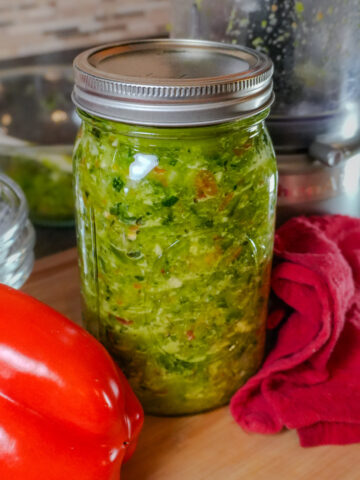
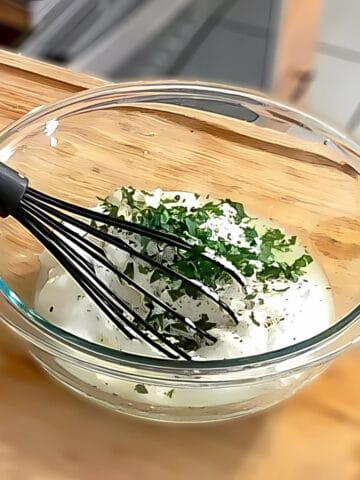
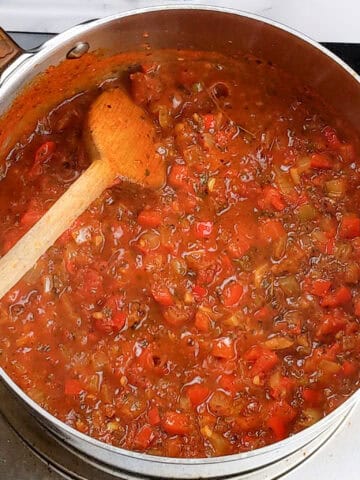
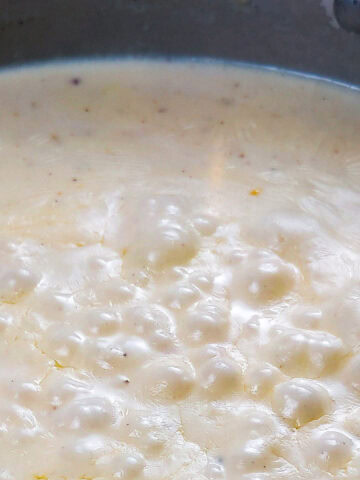
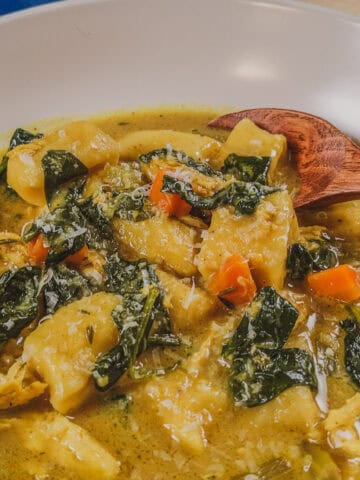
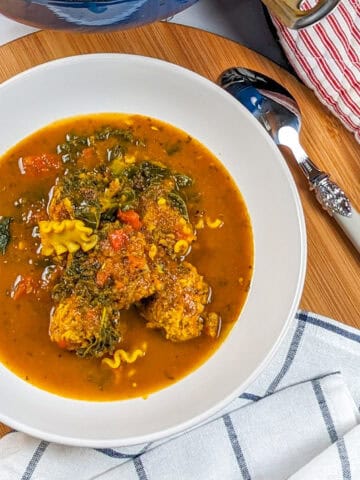
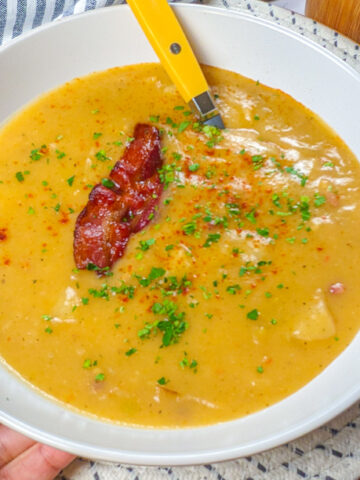
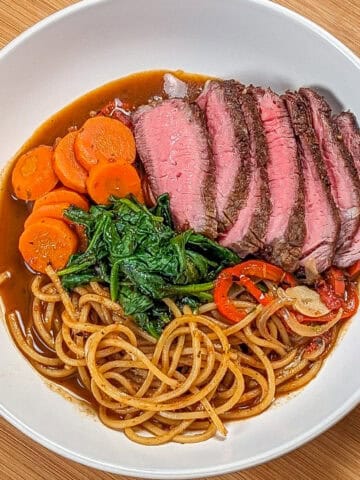

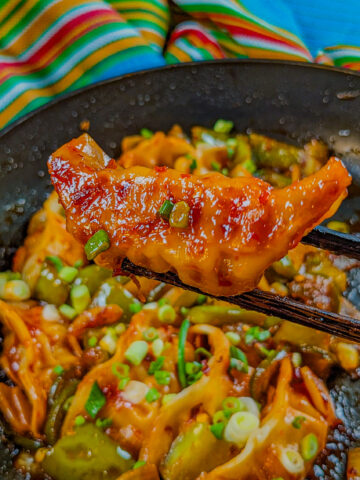
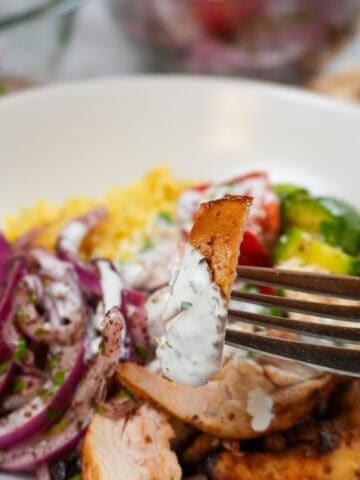
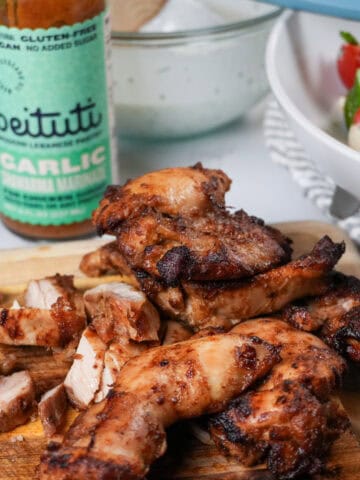
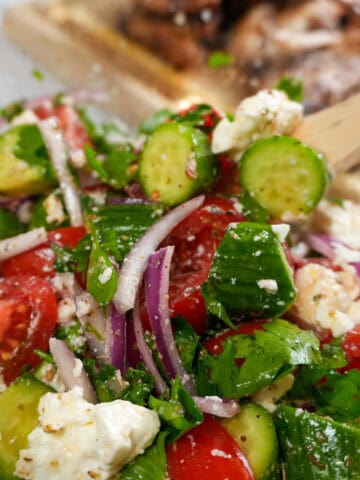
Leave a Reply